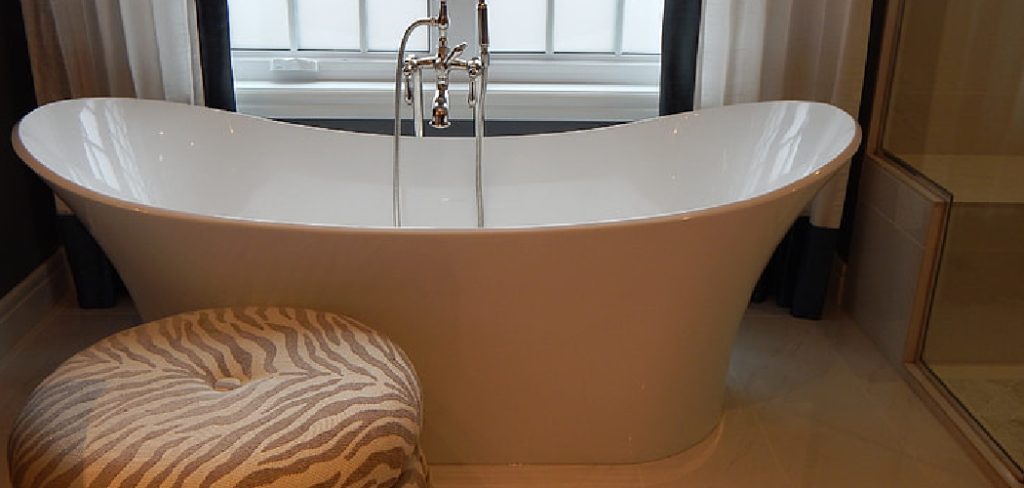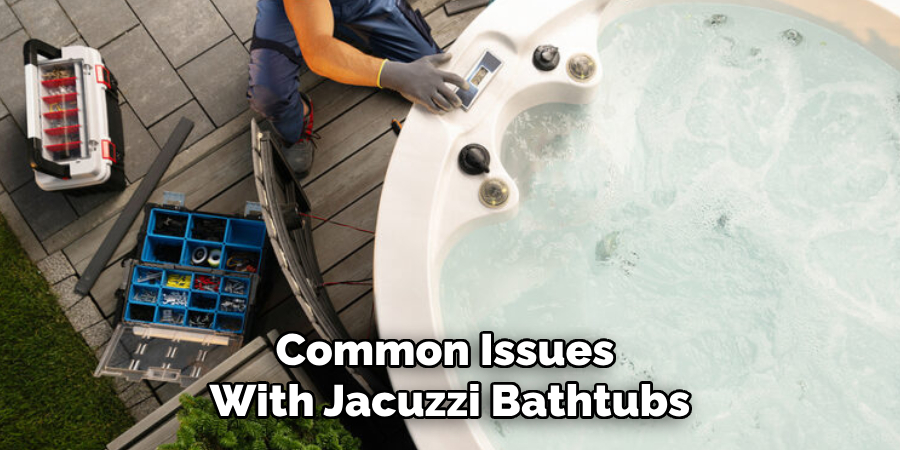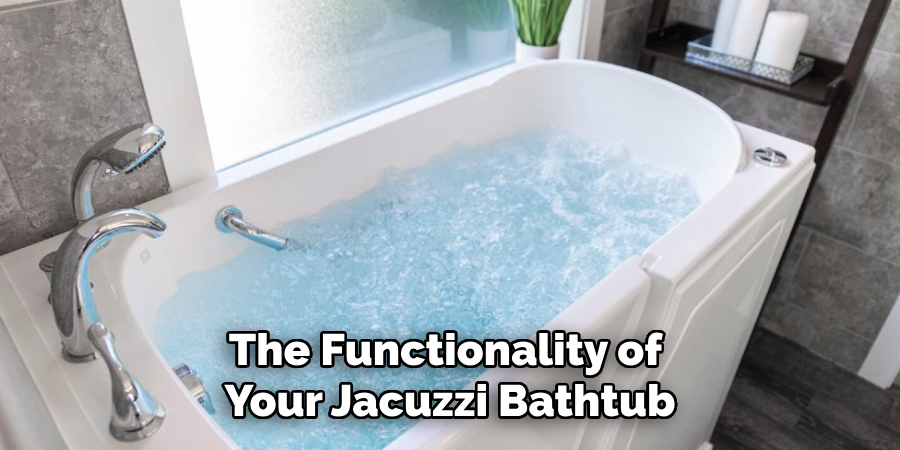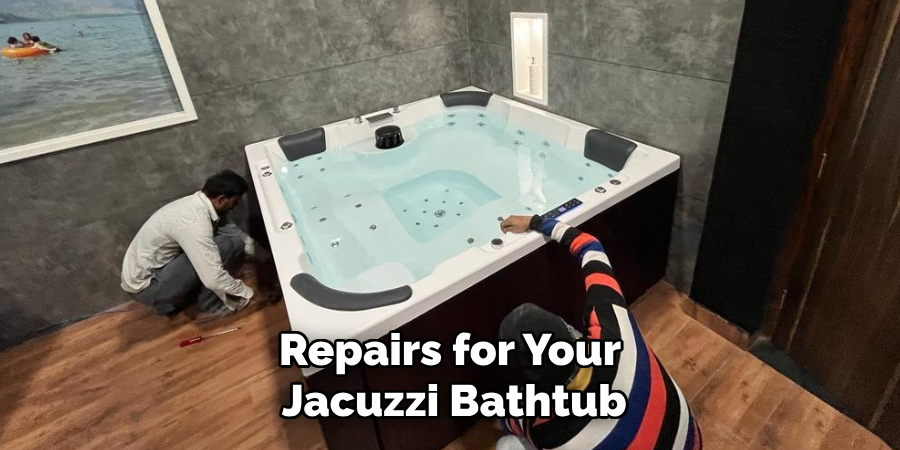A jacuzzi bathtub is a luxurious addition to any bathroom, providing relaxation and therapeutic benefits. However, like any appliance, it may occasionally encounter issues that require attention. Whether it’s a clogged jet, a malfunctioning motor, or leaks, understanding how to troubleshoot and fix common problems can save you time and money. This guide will help you identify and address these issues, ensuring your jacuzzi bathtub remains in perfect working condition.

So, let’s dive in and discover how to fix a jacuzzi bathtub with confidence and ease!
Importance of Timely Repairs
Addressing issues with your jacuzzi bathtub promptly is crucial to maintaining its performance and longevity. Delaying repairs can lead to more significant problems, such as motor damage, reduced efficiency, or even costly water damage to surrounding areas. Timely repairs also ensure that your bathtub remains safe to use, as unresolved issues could pose risks like electrical malfunctions or leaks.
By taking swift action when problems arise, you not only save money in the long run but also ensure that your jacuzzi bathtub continues to provide the relaxation and comfort you deserve.
Tools and Materials Needed
Before starting any repair work on your jacuzzi bathtub, it’s important to have the right tools and materials on hand. Having these items ready will make the process more efficient and help you address issues effectively. Below is a list of commonly required tools and materials:
- Screwdrivers (Flathead and Phillips): For removing and securing screws during repairs.
- Rubber Gloves: To protect your hands from chemicals and sharp surfaces.
- Wrench Set: Useful for tightening or loosening nuts and fittings.
- Multimeter: To test electrical components like the motor and wiring.
- Silicone Sealant: For repairing or preventing leaks around fittings and joints.
- Replacement Parts: Such as new jets, gaskets, or filters, depending on the issue.
- Tub Cleaner or Descaler: For cleaning clogged jets or buildup inside the system.
- Bucket and Towels: To manage water spills and keep the work area dry.
By gathering these tools and materials before beginning your repairs, you’ll ensure the process is smooth and manageable, allowing you to restore your jacuzzi bathtub to full functionality in no time.
10 Methods How to Fix a Jacuzzi Bathtub
1. Inspect and Tighten Connections to Fix Leaks
Leaks are one of the most common issues with Jacuzzi bathtubs. Begin by carefully inspecting all visible plumbing connections, such as the water supply lines, drainpipe, and jet assemblies. Tighten loose connections using an adjustable wrench, ensuring they are snug but not overtightened. If the problem persists, check for cracked or damaged seals around the jets or pump. Replace worn-out gaskets or seals to restore a watertight connection.

2. Clean and Unclog the Jets
Clogged jets can reduce water pressure and hinder the massage effect of your Jacuzzi bathtub. To fix this, fill the tub with warm water and add a cup of white vinegar or Jacuzzi cleaning solution. Run the jets for 10–15 minutes to dissolve any buildup of soap scum, minerals, or debris inside the system. For stubborn clogs, use a soft brush to gently scrub the jet nozzles and remove obstructions manually.
3. Repair or Replace a Malfunctioning Pump
The pump is the heart of a Jacuzzi bathtub, circulating water through the jets. If the pump is noisy, leaking, or not functioning at all, it may need repairs or replacement. Start by turning off the power to the bathtub and inspecting the pump for visible signs of damage, such as cracks or worn-out parts. If the impeller is jammed, clean or replace it. In cases of motor failure, consult a professional to replace the entire pump assembly.
4. Fix a Non-Responsive Control Panel
A non-responsive control panel can disrupt the functionality of your Jacuzzi bathtub. Check the power supply to ensure the unit is receiving electricity. If the panel displays error codes, refer to the manufacturer’s manual to identify the issue. Reset the system by turning off the power for a few minutes before switching it back on. If the problem persists, consider replacing the control panel or consulting a technician for advanced repairs.
5. Seal Cracks in the Bathtub Shell
Cracks in the bathtub shell can lead to water leaks and structural instability. Clean the affected area thoroughly and dry it completely. Use a fiberglass repair kit or epoxy resin to fill the cracks, following the manufacturer’s instructions. Smooth the surface with sandpaper after the resin has cured, and apply a matching touch-up paint for a seamless finish. This method is effective for small to moderate cracks.

6. Replace Worn-Out Heater Components
If the water in your Jacuzzi bathtub fails to heat, the problem might lie with the heater. Begin by checking the thermostat settings and ensuring the power supply is intact. Inspect the heating element for signs of wear or damage. Replace faulty components, such as the heating coil or thermostat, as needed. Always turn off the power before performing any electrical work to ensure safety.
7. Address Noisy Operations
Unusual noises, such as grinding or humming, can indicate issues with the pump or motor. Inspect the pump for loose components, debris, or worn-out bearings. Tighten screws and fasteners as needed, and remove any foreign objects. Lubricate moving parts to reduce friction and noise. If the motor bearings are worn out, they may need replacement. Persistent noise may require professional diagnosis and repair.
8. Fix Slow Draining Issues
A slow-draining Jacuzzi bathtub can be caused by a clogged drain or improper venting. Remove the drain cover and use a plumbing snake or drain auger to clear any blockages. Flush the drain with a mixture of baking soda and vinegar, followed by hot water, to dissolve buildup. Check the vent pipes for obstructions, as poor ventilation can also affect drainage. Ensure the pipes are clear and functioning properly.
9. Restore Jet Pressure
Low jet pressure can result from airlocks, mineral buildup, or pump issues. To fix an airlock, open the air control valves and run the jets for a few minutes to release trapped air. If mineral buildup is the culprit, use a descaling solution to clean the jet system. Inspect the pump for signs of wear and ensure it is operating at full capacity. Replacing damaged parts may be necessary to restore optimal jet pressure.
10. Maintain Regular Cleaning and Preventative Care
Preventative maintenance is key to avoiding costly repairs for your Jacuzzi bathtub. Clean the tub and jets regularly to prevent buildup of soap scum, oils, and minerals. Use a soft cloth and mild cleaning agents to protect the finish of the tub. Flush the jet system monthly with a cleaning solution to keep it functioning efficiently. Inspect plumbing connections and seals periodically for signs of wear or leaks. Proper care ensures your Jacuzzi remains in top condition for years to come.

Maintenance and Upkeep
Proper maintenance and regular upkeep are essential for prolonging the lifespan of your Jacuzzi bathtub and ensuring it operates at peak performance. Here are some key practices to follow:
- Clean the Tub Regularly: After each use, wipe down the tub with a soft, non-abrasive cloth to remove soap residues, oils, and dirt. Avoid using harsh chemicals that can damage the surface of the tub.
- Flush the Jet System: At least once a month, fill the tub with warm water and add a cleaning solution designed for Jacuzzi bathtubs. Run the jets for 10–15 minutes to remove mineral deposits, biofilm, and debris that may accumulate inside the system.
- Inspect Plumbing Connections: Periodically check all visible plumbing connections, including the water supply lines and drainpipes, for signs of leaks or wear. Tighten loose fittings and replace any damaged components to prevent serious issues.
- Check the Pump and Heater: Ensure the pump and heater are functioning correctly by monitoring water flow and temperature. If you notice any irregularities, address them promptly to avoid further damage.
Safety Considerations
When using and maintaining your Jacuzzi bathtub, safety should always be a priority. Follow these essential safety tips to ensure a secure and enjoyable experience:
- Electrical Safety: Always turn off the power supply before performing any maintenance or repairs. Avoid using electrical devices near the tub to prevent the risk of electric shock. If you suspect electrical issues, consult a licensed electrician or technician.
- Avoid Overheating: Set the water temperature to a safe level, typically below 104°F (40°C), to prevent overheating or scalding. High temperatures can also cause dizziness or dehydration during prolonged use.
- Use Caution with Cleaning Agents: Some cleaning products may emit harmful fumes or cause skin irritation. Ensure the area is well-ventilated during cleaning and always wear protective gloves. Use only recommended cleaners to avoid damaging the tub.
- Secure Installation: If you need to replace or adjust components, ensure they are properly secured and installed according to the manufacturer’s guidelines. Loose fittings or improper installations may lead to leaks or malfunction.

Conclusion
Fixing a Jacuzzi bathtub can seem daunting, but most issues can be addressed with a combination of regular maintenance, basic tools, and proper techniques. Whether it’s a clogged jet, leaking connection, or non-functioning pump, following these detailed methods will help you identify and resolve common problems. Thanks for reading, and we hope this has given you some inspiration on how to fix a jacuzzi bathtub!

